For Theresa’s first full day in Delhi (March 26), it only made sense to visit the first city of Delhi: Lalkot, which dates to around 1060. Here, Delhi’s first sultan, Aibak, imposed Muslim rule and began construction of a mosque and tower that would proclaim Islam’s victory and domination. So why can you see Hindu architectural designs in the buildings? Watch this short UNESCO World Heritage video to find out!
The Qutub Minar, which stands about 238 feet high, is the main attraction at the Qutub Complex. Here are some interesting facts about the mosque and minaret, from the UNESCO website:
The Quwwatu’l-Islam mosque consists of a courtyard, cloisters, and a prayer hall. The high arched screen facing the prayer hall was added in the 14th century. The Qutb Minar is a column built from red and buff sandstone blocks rising to a height of 72.5 m, tapering from 2.75 m diameter at the top to 14.32 m at the base, making it the highest stone tower in India. In addition to its traditional use for calling the faithful to prayer, it also has a monumental purpose, since a later Nagari inscription calls it Alauld-Din’s ‘victory monument’ (Vijava-stambha). In its present form it consists of five storeys, the topmost of the original four storeys having been replaced by two storeys during the reign of Firuz Shah Tughluq. Each storey is separated from the next by highly decorated balconies, with pendentives and inscribed bands. The three earlier storeys are each decorated differently, the lowest being of alternating angular and rounded flutings, the second with rounded flutings alone, and the third with angular flutings alone; the same vertical alignment continues, however, through all three storeys. The whole structure was originally surmounted by a cupola, which fell during an earthquake and was replaced by a new cupola in late Mughal style in the early 19th century. This was so incongruous that it was removed in 1848 and now stands on the lawns to the south-east of the minaret.
This shot was taken from inside the mosque courtyard.

I enjoyed strolling around the complex with its manicured gardens, pockets of shady trees, pathways and historical markers. There was a sense of organization and peace, despite the big tour groups.
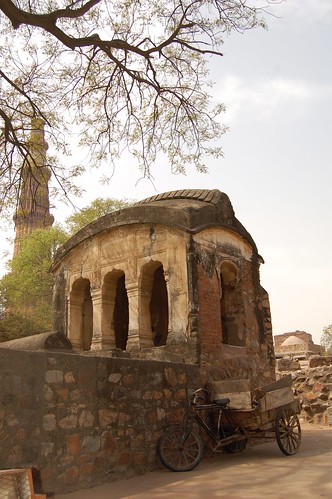
The tomb of Iltutmish, Aibak’s successor, was especially impressive with its elaborate Islamic carvings.
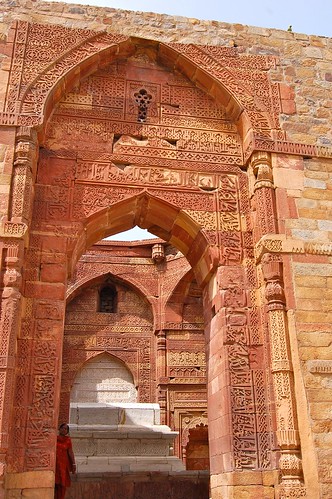
The Alai Minar was meant to be even taller than the Qutub Minar, but it was never finished.
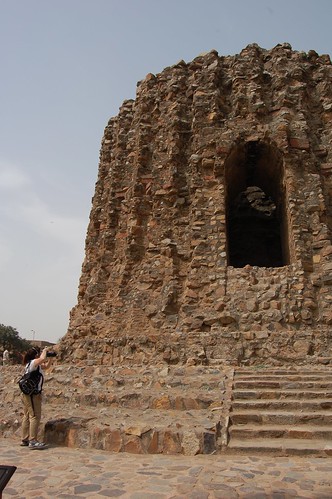
Theresa and I paid a bit extra for an excellent audio tour of the complex. At designated historical spots along the path, we stopped, punched in the corresponding number, hit “play” and listened to detailed stories of life 800 years ago. I wish I could remember some of them…





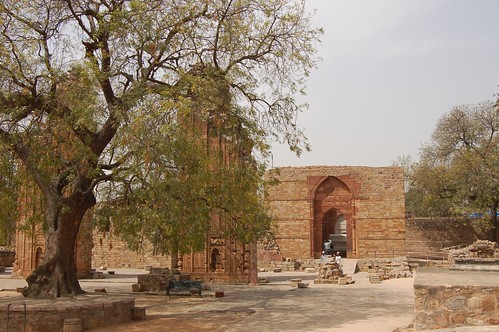

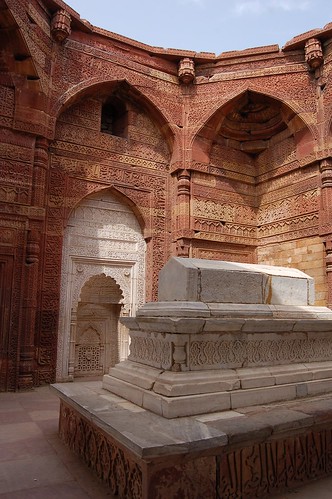

Love to see your new post. whenever i see the name Qutub Minar and India Gate, it means Delhi. These both places are the symbol of New Delhi and I love to visit both places. Subscribed your blog for regular updates.